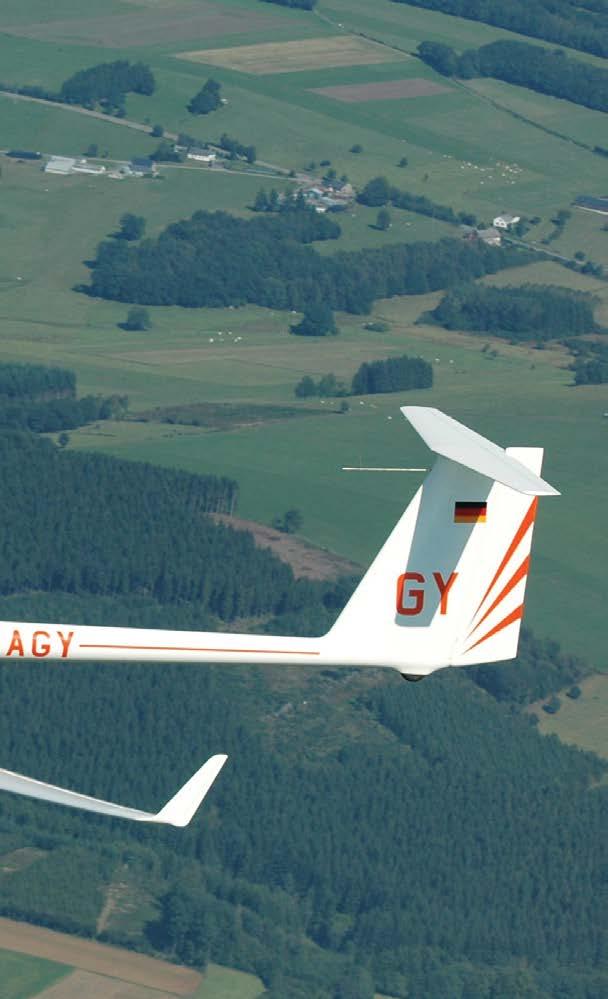
3 minute read
A Question of Safety
from SoaringNZ Issue 11
by mccawmedia
A summer soaring flight, scenic or contest? Does it make a difference?
Recognising that our individual motivation can affect our momentary risk profile empowers us to resist gambling with danger. Let’s review our risk profile periodically – at least prior to every new soaring season.
Advertisement
It is also a known fact that humans are less inclined to abandon their goal the closer they get to it. Glider pilots have continued on a very marginal final glide to their intended destination although an outlanding would have been the only safe option. “Get home-itis” is the word often used to describe the phenomenon. Let’s be aware of it and resist it when next it arises. Smart pilots are constantly assessing ways to avoid bad luck while flying. One poor judgment will increase the probability that another will follow and this holds true especially in gliding. If the poor judgment chain is allowed to grow, the chance of a safe outcome decreases rapidly.
The old saying holds true more than ever: “Superior pilots use their superior knowledge to avoid situations requiring the use of their superior skills.”
Bernard Eckey is the Gliding Federation of Australia head coach for South Australia and the Northern Territory and the author of Advanced Soaring Made Easy. He will be head coach of the Matamata advanced Cross Country Course in November.
Not long ago I couldn’t even spell NOO. Now I am one.
A few words about myself – I first discovered the joys of silent flight about 33 years ago at Christchurch. At that time I was already an incurable ‘airhead’ with a PPL who could never get enough of aviation; but gliding had never occurred to me. After my first year in the air force, I moved to RNZAF Base Wigram where I saw some gliders. Being curious, I took a quick up and down flight and I was well and truly hooked.
After Wigram I did a lot of flying from Ohakea, Blenheim and Paraparaumu, as well as numerous other locations, but not a lot of serious cross country flying. Nevertheless, I did manage to get my 300km in a K-13 from Omarama, and I landed various Blaniks, K-13s, Olympias and Phoebuses into lots of paddocks.
I then gave up for 10 years to raise a family, pay a mortgage and gaze longingly at fluffy cumulus. I started flying again 10 years ago, after I moved back to Blenheim. I have been filling my boots ever since with the help of a Mini-Nimbus, a very understanding wife, some very obliging club members and some of the best soaring conditions in the country.
Not long ago, I woke up one morning and realised that I was one of those ‘old buggers’ that the gliding movement depends on to keep things going safely. I have to say: I often don’t feel like it – there are still lots of pilots out there with a whole lot more experience than I have.
In theory, I am now responsible for ensuring that all gliding operations conducted under the auspices of GNZ conform to the relevant standards, regulations, and procedures, and in particular to the GNZ Manual of Approved Procedures, the GNZ Instructor’s Handbook, and Civil Aviation Rules. What a mouthful.
“And why do we need to bother?” I hear you ask. “So we can all enjoy ourselves in safety and with the minimum of outside interference,” goes the reply.
In practice however, I can’t even begin to hope to achieve this on my own. It will happen only if responsible pilots – that means you and me – do the right things.
One of those right things is to take personal ownership of promoting good standards to those around us. This includes making it obvious to our gliding mates, peers, juniors and seniors that we expect the same from them; and being constructive in any criticism we might offer them. Instead of acting like cops, we need to act like mentors.
So let’s fly safely, have fun, and share our wisdom and experience with others as we gear up for another soaring summer.










